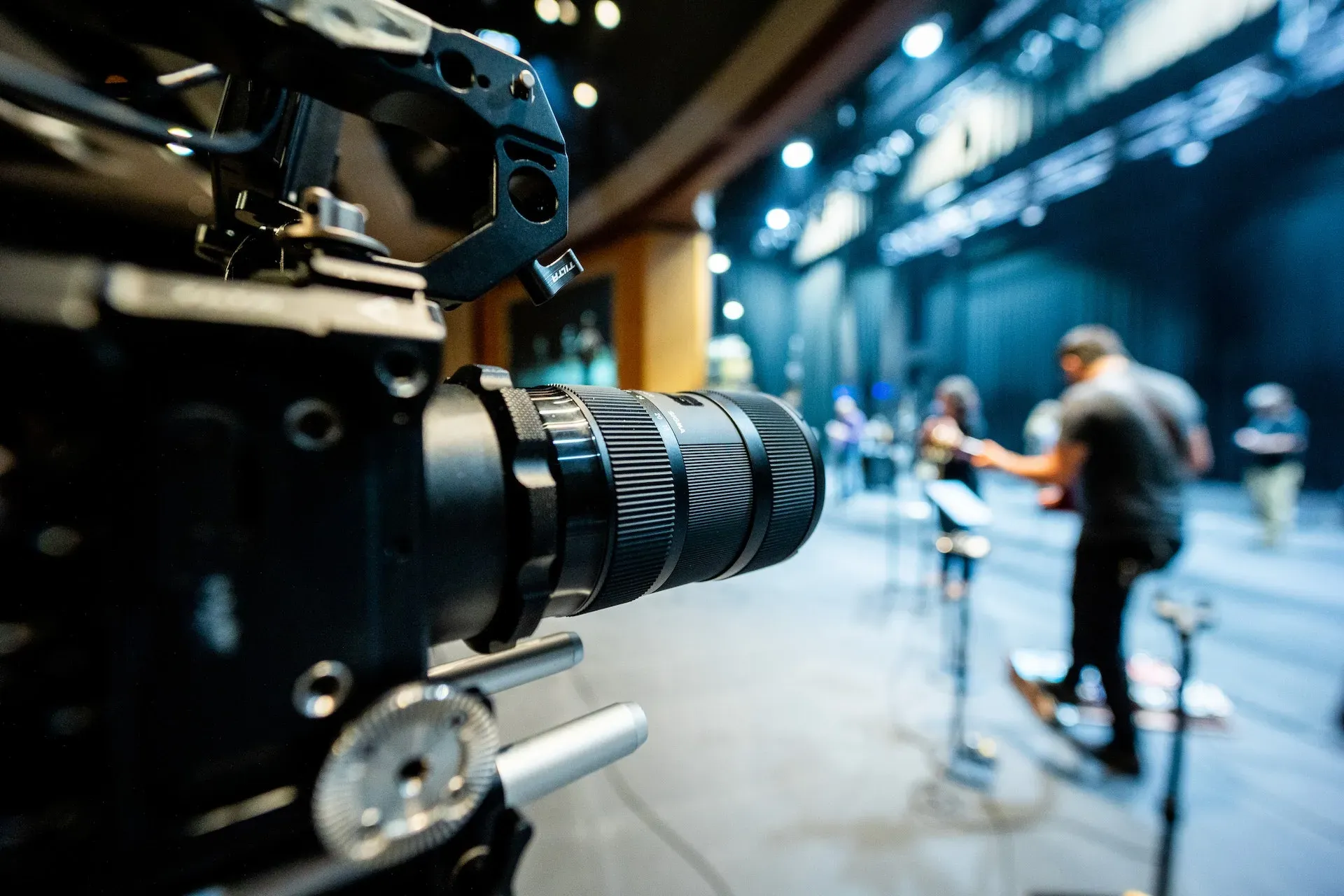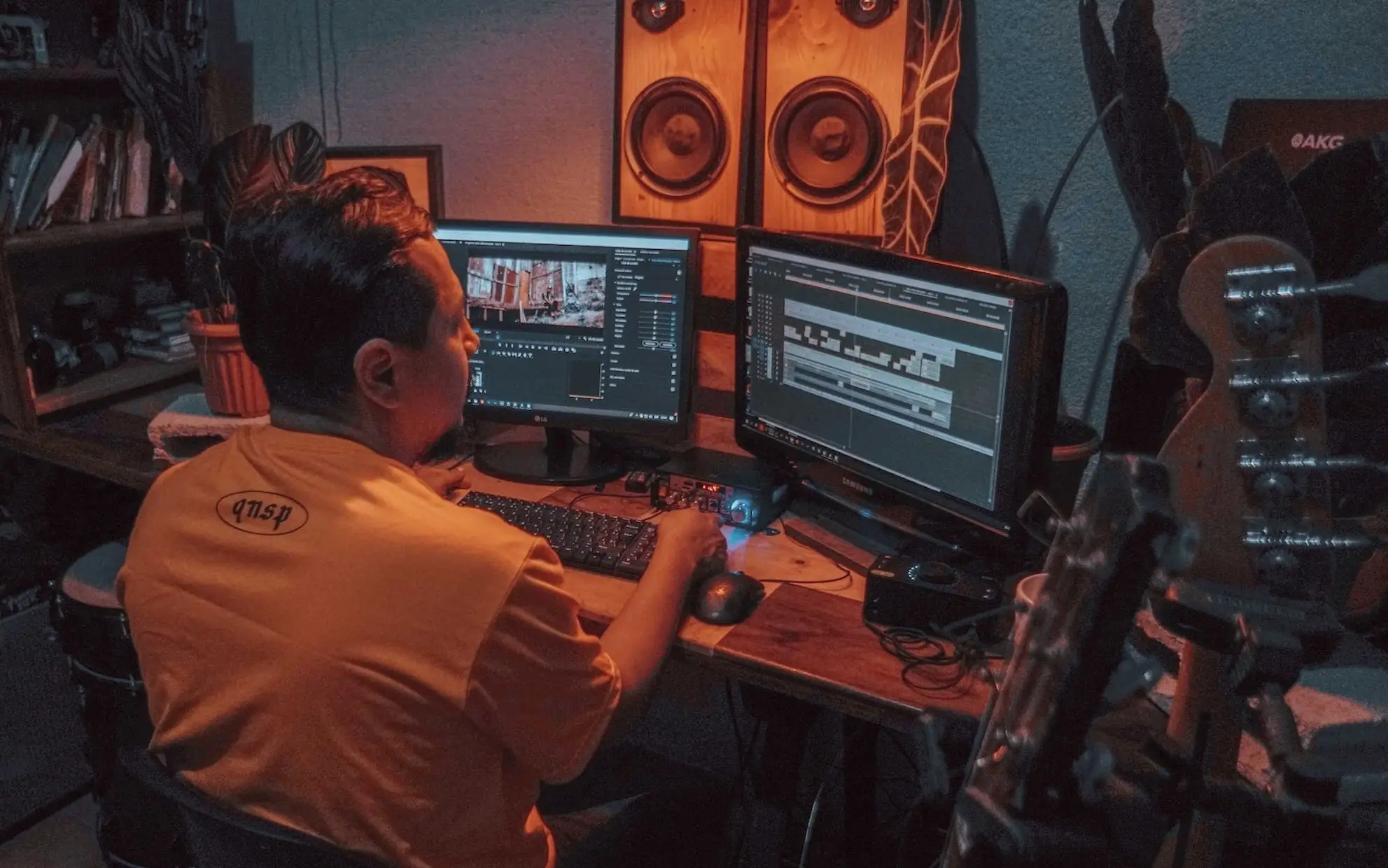How to edit music videos: Tips and tricks that’ll make your work shine
Wondering how to edit music videos? Learn the essential tips and tricks, figure out the best apps for music video editing, and a bunch more.

Shooting a music video is tough enough, but how about editing a music video? Don’t worry – we’ve got you covered. Check out all the tips, tricks, and cheat codes below.
How do you edit music videos?
Music videos are a different beast to, say, vlogs, travel content, or bite-sized YouTube Shorts. The visual aspect is used to enhance the music, rather than the other way around. It can be a tricky tightrope to walk, so let’s break down some of the key music video editing tips, tricks, and techniques you should know.
1. Map everything out
Whether you storyboard it or write a script, you’ll need a running order. Even if you’re working on your own, you can’t go in without a plan – you’ll have too much footage and no context with which to assemble the final product.
Do what feels right for you, but keep the artist in mind. If they request a rundown of everything beyond the initial treatment, you’ll get bonus points for delivering the goods oven-ready. A formal, detailed document like a script or storyboard will also help others offer their input.

2. Start editing with your artist footage
If you’re including the artist within the music video, cut that footage first. It doesn’t matter if they’re lip-syncing to the song or climbing up a mountain – the artist is the point from which your music video hangs.
If you’re editing a performance video, it should be easy to identify the shots you want to include. After all, you’ll have an idea of what you want to convey with your B-roll, and when you want to cut back to the artist belting out a huge chorus.
Pay extra attention to timing, as even a fraction of a second’s difference between a lip-sync and the music can be confusing. Programs like Adobe Premiere Pro can make this part of editing music videos a dream, thanks to its ‘Automate to Sequence’ function. This tool lets you edit to the beat.
If your footage doesn’t include the artist, your music video edit will require a little more nuance. You’ll need to familiarize yourself with the track’s peaks and troughs, identify the ‘hook’ moments, and line up the tempo of your on-screen action with the music’s BPM.

3. Don’t forget the B-roll
B-roll is an essential ingredient for editing music videos. In a nutshell, B-roll shots are ‘extra’ or alternative pieces of footage that can add context and spice to your finished video.
If you’re both filming and editing, make sure to pick up some extra shots to save you trouble in the edit. If someone else filmed the music video, ask if they have any B-roll. The variety will help give the finished product a more ‘lived in’ feel, and it’ll save you a headache if you’re struggling to find usable shots from your primary footage.
4. Aim for a dynamic shoot
Unless you’re going for something like James Blunt’s ‘You’re Beautiful’ – we’re shivering – then your music video will likely need to operate with some form of dynamism.
Static shots, shots that all follow the same formula, the same kinds of shots – you’ll run the risk of boring viewers. Unless the music demands it, try to avoid repetition within the shots and techniques you use.
Take a look at Epidemic Sound artist Superintendent McCupcakes, and his video for ‘NO CURVES’ – that should give you some inspiration. Whatever your taste in music, you could never accuse this of being dull.
5. Keep an open dialogue
Hopefully, you’ll have discussed the music video concept with the artist before editing. Keep that dialogue open throughout the editing process, striking a balance between ‘I’ve got this’ and ‘I’d love your input.' After all, you’re telling their story – sending rough cuts or asking for suggestions is a great way to squeeze any new ideas out of the process.
Likewise, there are other considerations. Can you balance the brief – perhaps set by the record company, or someone else entirely – with the artist’s vision? It’s a thin line to walk, and if you’re editing music videos with genuine commercial potential, it’s something you’ll have to nail.
6. Add effects
‘Effects’ is a broad term because, well, it’s a broad subject! There are so many rabbit holes you can burrow into with video editing effects, and it all depends on the vibe you’re going after.
Could a dash of Ken Burns effect add some much-needed melancholy and dread to your post-rock music video? Will a high-contrast color grade complement the cinematic beats you’re blasting through your music video? Can speeding up the video match the hyperpop fizziness of your chosen track? There’s only one way to find out, and that’s by experimenting with different video editing software and apps.

Frequently asked questions on music video editing
Now that we've discussed the tips and tricks, let’s rattle through some frequently asked questions on music video editing.
What are the best apps and software for editing music videos?
There are countless apps and gadgets out there, but if you want the industry-standard software or app for music video editing, it’s Adobe Premiere Pro. Other programs have their merits, but Premiere Pro is the boss.
If you’re on a budget, there are still a handful of high-quality options out there for a fraction of the price, or even for free. Here are a few that won’t cost you a dime:
- Apple iMovie: Free to download for Apple users. It even supports 4K video nowadays, and its cross-device flexibility always comes in handy if you’re editing on the move.
- OpenShot: A free-to-use, award-winning video editor that works for Linux, Mac, and Windows. It even lets you render 3D animations!
- DaVinci Resolve: Oh, an Emmy™ Award-winning program you can use for free? It’d be rude not to.
If you want to sharpen up your music video editing skills, why not try some of our top-drawer tunes? We’re packing a catalog of more than 50,000 tracks, cleared for global use with an Epidemic Sound subscription. Check out the catalog here and sign up below.

Can you edit a music video on your iPhone or Android device?
When you think of how to edit music videos, you don’t usually finish that thought with ‘on iPhone’, right? It’s time to reconsider what counts as ‘professional’ nowadays; you can achieve slick results without being chained to a desktop.
In fact, Lady Gaga’s ‘Stupid Love’ music video was shot on an iPhone 11 and edited with the Filmic Pro mobile app – it was all done on ‘just’ an iPhone. Looks pretty good to us.
If you’re an Android user, apps like Filmr, PowerDirector, and more are available on the Google Play Store, alongside OpenShot.
How long does it take to edit a music video?
How long is a piece of string? It depends entirely on which music video editing techniques you’re using, the type of video you’re going for, and more variables that are unique to your project.
On average, though, editing a three-to-four-minute music video will take between 40 and 50 hours. This considers all the different angles, lighting fixes, actors, green screens, editing techniques like jump cuts, and extra music video editing effects you throw in there. If it’s worth doing, it’s worth doing right.
How much does it cost to edit a music video?
If you’re editing music videos on your own, it’ll cost you the price of the editing software. If you’re offering your services to customers, rates start at around $50 per hour. Depending on your experience and reputation, this number could climb up to somewhere like $150 per hour.
Prices are often considered ‘up for negotiation’, but don’t sell yourself short. If you feel like someone is lowballing you, try to explain the value you’ll offer. After all, they’re coming to you for a reason: they need someone to edit their music video!
With those tips, tricks, and suggestions in your back pocket, it’s time to go forth and edit music videos. Try things out, ask for help when it’s needed, and most importantly, have fun. Whether you’re editing for yourself, a friend, or a client, keep hold of that joy.

Are you a filmmaker wanting to go pro? We've got you covered with background music for videos, including:
Take your video editing to the next level with our massive catalog of music for filmmakers.

